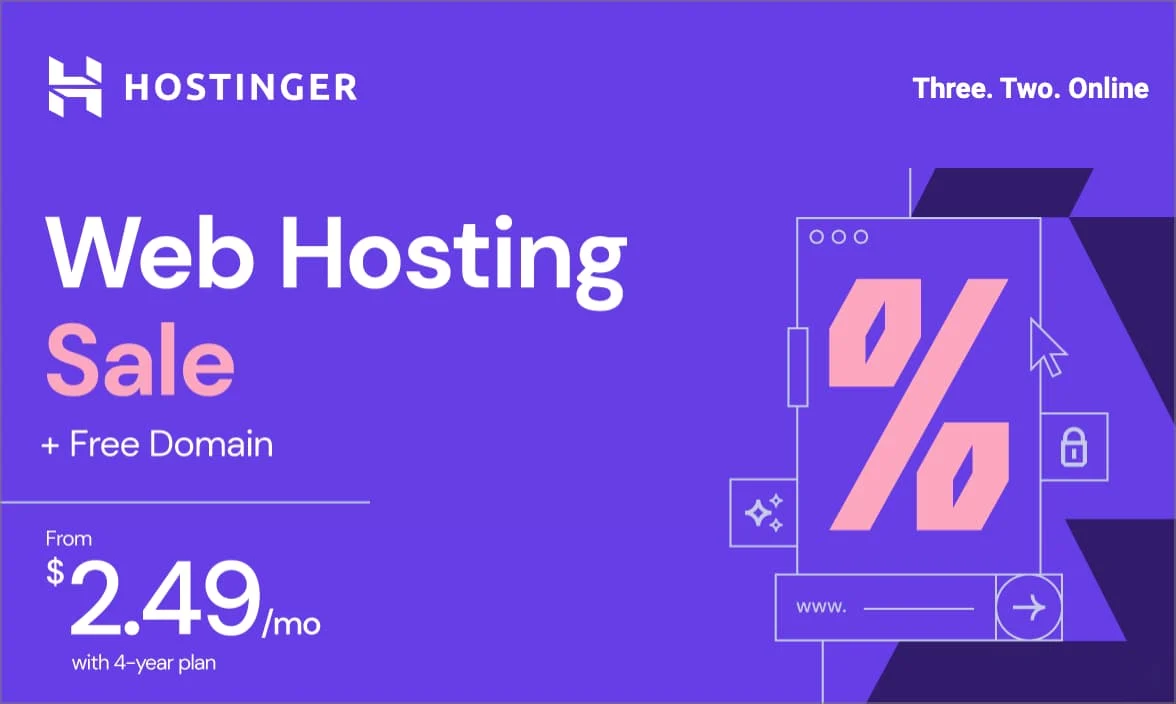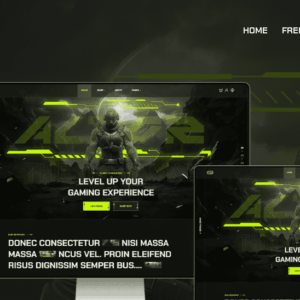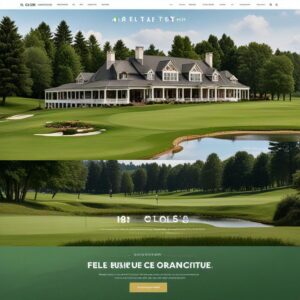
Web Design Salaries and Freelance Rates: What to Expect in 2024
Web Design Salaries and Freelance Rates
Introduction
In today’s digital age, the demand for skilled web designers is skyrocketing. As businesses and individuals increasingly rely on online platforms to connect with their audiences, the need for visually appealing and user-friendly websites has become paramount. This surge in demand has opened up a plethora of diverse web design career paths, each offering unique opportunities for those with a passion for creativity and technology.

Diverse Career Paths in Web Design
Freelance Web Design: For those who crave independence and flexibility, freelancing is an attractive option. As a freelance web designer, you have the freedom to choose your projects, set your own freelance web design rates, and work from anywhere in the world. This path allows you to build a diverse portfolio, work with a variety of clients, and have complete control over your schedule. However, it also requires self-discipline, marketing skills, and the ability to manage your own business.
Table of Contents
Web Designer Salary: The In-House Option
Choosing to work as an in-house web designer offers a distinct path in the web design career. Let’s explore what you can expect in terms of income and the factors that influence it:
Average Web Designer Salary Ranges
Your web design earnings as an in-house designer will vary significantly based on your experience level:
- Junior Web Designer Salary: At the entry level, you can expect a more modest web design income, usually falling within the range of Rs. 400,000 to Rs. 800,000 per year in Pakistan.
- Senior Web Designer Salary: With several years of experience under your belt, your web designer salary will naturally increase. Senior web designers typically earn between Rs. 800,000 and Rs. 1,500,000 annually.
- Lead Web Designer Salary: Leading a team of designers comes with greater responsibility and a higher web design income. Leads can earn upwards of Rs. 1,500,000 per year.
Additional Factors Influencing In-House Web Design Income
Beyond experience, several key factors can significantly impact your in-house web designer salary:
- Company Size: Larger companies with more substantial resources often offer higher salaries compared to smaller startups.
- Industry: Certain industries, such as tech or finance, tend to pay their web designers more generously than others.
- Location: Your web design earnings can also be influenced by where you live. Major cities like Karachi or Lahore might offer higher salaries due to increased demand and cost of living.

Potential Benefits of In-House Work
While the allure of freelance web design rates can be tempting, working in-house comes with its own set of advantages:
- Stability: In-house positions typically offer a reliable income and benefits like health insurance and paid time off, which can be less predictable in the world of freelance web developer income.
- Collaboration: Working within a team allows for greater collaboration and the opportunity to learn from experienced colleagues, boosting your professional development and ultimately your web design income potential.
- Professional Development: Many companies invest in their employees’ growth, providing training opportunities that can enhance your skills and lead to promotions and higher web designer salaries.
How to Make Money as a Web Designer: The In-House Path
Choosing the in-house route offers a structured way to build your web design career and achieve financial success. As you gain experience and expertise, your web designer salary will naturally increase. By carefully considering the factors mentioned above and positioning yourself strategically, you can maximize your web design earnings within the in-house environment.
Freelance Web Design Rates: The Path to Independence
Embarking on a career in freelance web design offers enticing prospects of flexibility, autonomy, and creative control. However, navigating the financial aspects can be daunting for many aspiring web designers. Understanding typical freelance web design rates, implementing effective pricing strategies, and weighing the pros and cons of freelancing are crucial for maximizing your web design income and achieving independence.
Typical Freelance Web Design Rates
Freelance web design rates vary significantly depending on factors such as experience, expertise, project scope, and geographical location. Generally, freelance web designers charge using three main pricing models:
- Hourly Rates: This model involves charging clients a fixed rate per hour of work. Hourly rates for freelance web designers typically range from $30 to $150+ per hour, with experienced designers often charging higher rates.
- Project-Based Rates: In this model, designers charge a fixed fee for completing an entire project. Project-based rates offer more predictability for both the client and the designer. The cost of a web design project can range from a few hundred dollars for simple websites to tens of thousands of dollars for complex, custom-built websites.
- Retainer Rates: This model involves charging clients a recurring fee for ongoing web design and maintenance services. Retainer rates offer a stable web designer salary and are suitable for long-term client relationships.
Strategies for Setting Competitive Rates and Maximizing Freelance Web Developer Income
- Assess Your Value: Consider your experience, skills, and the value you bring to clients. Don’t undervalue your expertise.
- Research Market Rates: Investigate typical freelance web design rates in your area and niche to ensure your rates are competitive.
- Factor in Expenses: Calculate your business expenses, including software, marketing, and taxes, when setting your rates.
- Offer Packages: Create different pricing packages to cater to varying client budgets and needs.
- Value-Based Pricing: Instead of focusing solely on the time spent, consider the value your work delivers to clients.
- Negotiate: Be open to negotiating rates with clients, but always have a minimum rate in mind.
- Upsell Services: Offer additional services like SEO optimization, content creation, or website maintenance to increase your web design earnings.
Pros and Cons of Freelancing
Pros:
- Flexibility: Set your own schedule and work from anywhere.
- Autonomy: Choose the projects you want to work on and have creative control.
- Earning Potential: Experienced freelance web designers can earn a substantial web designer salary.
Cons:
- Variable Income: Income can be inconsistent, especially when starting.
- Self-Marketing: You need to actively market your services to find clients.
- Isolation: Freelancing can be lonely without the social interaction of a traditional workplace.
Building a Successful Web Design Career
To thrive as a freelance web designer, focus on building a strong portfolio, networking with potential clients, and continuously honing your skills. Consider joining online communities and attending industry events to stay updated on the latest trends and technologies. By mastering these aspects, you can pave the path to a rewarding and financially successful web design career.
How to Make Money as a Web Designer: Beyond the Basics
The field of web design offers a wide range of income streams, each with its own advantages and potential for web design earnings. As a freelance web designer or even as part of a design agency, understanding these different avenues can significantly boost your web designer salary and overall career prospects.
1. Selling Website Templates or UI Kits
One lucrative way to supplement your web design income is by creating and selling website templates or UI kits. These pre-designed components can be a lifesaver for clients who need a quick and affordable solution. Platforms like ThemeForest and Creative Market are popular marketplaces where designers can list their creations. This not only provides passive income but also helps establish your brand as a skilled designer.
2. Offering Website Maintenance and Ongoing Support
Websites require regular updates, security patches, and content changes to stay relevant and functional. Many clients are willing to pay a recurring fee for website maintenance services, providing you with a steady stream of income. This not only builds long-term relationships with clients but also ensures that your designs continue to perform optimally.
3. Creating Educational Content
Sharing your knowledge is a rewarding way to both earn money and contribute to the design community. Creating online courses, tutorials, or workshops on various aspects of web design can attract a wide audience of aspiring designers. Platforms like Udemy, Skillshare, and even your own website can be utilized to host and monetize your educational content.
4. Building a Strong Portfolio and Personal Brand
Your portfolio is your showcase, highlighting your skills and expertise to potential clients. A compelling portfolio can attract higher-paying clients who value quality and creativity. Additionally, cultivating a strong personal brand through social media, blogging, or speaking engagements can establish you as an authority in your field, leading to increased visibility and earning potential.
5. Staying Up-to-Date with Trends and Technologies
The world of web design is constantly evolving. Staying informed about the latest trends, tools, and technologies is essential for remaining competitive. Clients often seek out designers who can implement cutting-edge solutions. Continuously learning and upgrading your skills can open doors to new opportunities and higher freelance web design rates.

Factors Affecting Web Design Income
Several factors influence how much you can earn as a web designer:
- Experience: As you gain experience and expertise, your earning potential naturally increases.
- Skills: Specialized skills in areas like UX/UI design, e-commerce development, or motion graphics can command higher rates.
- Location: Web designers in major metropolitan areas typically earn more than those in smaller towns.
- Client Base: Working with large corporations or established brands often comes with higher budgets.
- Negotiation Skills: Knowing your worth and effectively negotiating contracts is crucial for maximizing your income.
The Path to Success in Web Design
Building a successful career as a web designer requires a combination of hard work, talent, and strategic decision-making. By diversifying your income streams, continuously learning, and building a strong reputation, you can achieve both financial stability and creative fulfillment.
Remember, the world of web design is full of opportunities for those who are willing to explore and adapt. By staying adaptable and continuously evolving, you can navigate the ever-changing landscape of web design careers and achieve your income goals.
Web Design Earnings: Factors That Make a Difference
Web design is a thriving field with a promising future. As businesses increasingly recognize the importance of a strong online presence, the demand for skilled web designers continues to grow. However, web design income varies greatly depending on several key factors. Understanding these factors can help aspiring and established web designers alike maximize their web designer salary and achieve long-term success in their web design career.
1. The Impact of Specialization on Web Design Earnings
Specialization plays a pivotal role in determining a web designer’s earning potential. While general web design skills are essential, specializing in specific areas can significantly boost your freelance web design rates. Some of the most lucrative specializations include:
- UX/UI Design: User experience (UX) and user interface (UI) designers focus on creating websites and applications that are both visually appealing and easy to use. Their expertise is highly sought after, as a positive user experience is crucial for customer engagement and retention.
- E-commerce: With the rise of online shopping, e-commerce web designers are in high demand. They specialize in creating online stores that are optimized for sales and conversions.
- Specific Platforms: Expertise in popular platforms like WordPress, Shopify, or Magento can also increase your earning potential. Many businesses rely on these platforms for their websites, and they need designers who understand their intricacies.
By developing a niche in one or more of these areas, you can position yourself as an expert and command higher freelance web design rates.
2. The Role of Location in Determining Web Design Income
Location is another critical factor that influences web design income. The cost of living and client budgets vary significantly from one region to another. Generally, web designers in major metropolitan areas like New York, London, or San Francisco tend to earn more than those in smaller cities or rural areas. However, this is not always the case.
- Cost of Living: In expensive cities, the higher cost of living often translates to higher freelance web design rates to cover expenses.
- Client Budgets: Large corporations and businesses in major cities typically have larger budgets for web design projects, allowing them to pay top dollar for experienced designers.
However, remote work has become increasingly common in the web design industry, opening up opportunities for designers to work with clients from anywhere in the world. This allows designers in lower-cost areas to potentially earn more by working with clients from high-cost regions.
3. The Importance of Networking and Building Relationships for Long-term Success
Networking and building relationships are essential for any web design career. Word-of-mouth referrals and repeat business from satisfied clients are invaluable for sustained web design earnings. Here are some tips for building a strong network:
- Attend Industry Events: Conferences, workshops, and meetups are excellent opportunities to connect with potential clients and other professionals in the field.
- Join Online Communities: Participate in online forums and groups dedicated to web design. Share your knowledge, ask questions, and engage with others.
- Build a Strong Portfolio: Showcase your best work in a well-designed portfolio. This is your chance to make a great first impression on potential clients.
- Offer Excellent Customer Service: Go above and beyond to meet your clients’ needs and exceed their expectations. This will lead to positive reviews and referrals.
By investing time and effort in networking and building relationships, you can create a sustainable and rewarding web design career!
Conclusion:
As we’ve explored the landscape of web design income in 2024, several key takeaways emerge:
- Web Designer Salaries Are on the Rise: The demand for skilled web designers continues to grow, driving web designer salaries upward. Whether you’re aiming for an in-house position or considering the freelance web design route, the potential for a rewarding web design career is clear.
- Freelance Web Design Rates Offer Flexibility: Freelance web designers enjoy the freedom to set their own freelance web design rates, potentially leading to higher web design earnings than traditional employment. However, this path requires self-discipline, marketing savvy, and a keen understanding of client needs.
- Web Developer Income Is Also a Lucrative Option: While our focus has been on web design, it’s worth noting that freelance web developer income is similarly promising. Many professionals combine design and development skills to maximize their earning potential.
- Your Skills and Experience Are Your Greatest Assets: No matter your chosen path, your ability to create stunning, functional, and user-friendly websites is the cornerstone of your success. Continuous learning and staying abreast of the latest trends will ensure your web design earnings remain competitive.
- The Future of Web Design is Bright: As businesses increasingly recognize the value of a strong online presence, the need for talented web designers will only intensify. This translates to ample opportunities to make money as a web designer and build a fulfilling career.
Embracing the Possibilities
Whether you’re an aspiring designer just starting or an established professional seeking to maximize your web design income, the dynamic field of web design offers a wealth of possibilities. By honing your skills, embracing new technologies, and understanding the financial landscape, you can position yourself for a successful and rewarding journey.
FAQs
What is the average web designer salary?
The web designer salary varies depending on factors like experience, location, specialization, and company size.
Entry-level web designers can expect an average of $45,000 – $71,000 per year.
Mid-level designers with a few years of experience can earn between $51,000 – $80,000.
Senior web designers often command salaries of $55,000 – $86,000 or more.
In tech hubs like San Francisco or New York, salaries tend to be higher due to the cost of living.
How much can freelance web designers charge?
Freelance web design rates vary wildly based on your experience, portfolio, skills, and the project’s complexity.
Starting freelance designers might charge $30-$50 per hour.
Experienced freelancers with a strong reputation can charge $75-$150+ per hour.
Project-based pricing is also common, where you estimate the total cost based on the scope of work.
What factors influence web design income?
Numerous factors affect web design earnings:
Experience: The more experience you have, the higher your earning potential.
Skills: Specialized skills like UX/UI design, e-commerce development, or motion design can increase your rates.
Location: Major cities often offer higher pay due to increased demand and living costs.
Client base: Working with larger clients or in specific industries can lead to higher-paying projects.
Marketing and networking: Effectively promoting your services and building relationships can attract high-value clients.
How can I increase my web design income?
To maximize your web design income, consider these strategies:
Specialize: Focus on a niche like responsive design, e-commerce, or a specific industry to command premium rates.
Build your portfolio: Showcase your best work to attract clients willing to pay for quality.
Network: Attend industry events, join online communities, and build relationships to gain referrals.
Upsell services: Offer additional services like SEO, content creation, or website maintenance to increase project value.
Consider freelancing: Freelancing offers flexibility and potential for higher earnings compared to traditional employment.
Is web design a good career for making money?
Yes, web design can be a lucrative career. The demand for talented web designers continues to grow as businesses recognize the importance of a strong online presence. With the right skills, experience, and marketing strategies, you can build a successful career and achieve a comfortable web design income.
How do freelance web developers compare in terms of income?
Freelance web developer income often aligns with web designers, especially if they offer overlapping services like front-end development. However, developers specializing in back-end development or complex web applications can often command higher rates due to the technical nature of their work.
I need Services with …
- Wordpress Service
- Shopify Service
- Youtube Service
- Cv and resume Service
- Linkedin Service
Latest Post
-
Top Daily Taste WordPress Theme: Best Choice for Your Site
$ 15Original price was: $ 15.$ 13Current price is: $ 13. Add to cartAdd to WishlistAdd to Wishlist -

Get Hostinger’s Low-Cost Hosting Now!
Don’t miss out on affordable hosting with Hostinger – click now to bring your website online at an unbeatable price!











1 comment
[…] very successful method for generating web design leads is cold emailing. You may produce a consistent flow of quality leads by selecting the appropriate audience to target […]